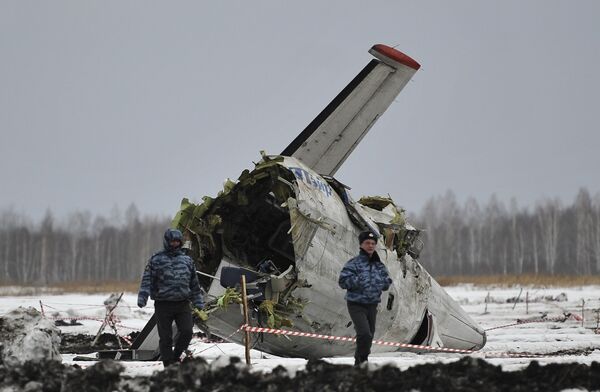MOSCOW, July 16 (RIA Novosti) – The crash of a Russian-operated regional airliner last April that killed 31 people was caused by failure to de-ice the aircraft before flight, a report by crash investigators said on Tuesday.
The French-built ATR72 turboprop operated by the UTair airline crashed just after take-off from the Siberian city of Tyumen’s Roshchino Airport with 43 people on board.
The immediate cause of the crash was “the flight captain’s decision to fly without conducting a de-icing procedure,” the Interstate Aviation Committee (MAK) said in its final report, adding ice was detected by the crew on the aircraft’s surfaces as late as when it was taxiing for departure.
Conditions at Roshchino in the hours before the crash were cold, with temperatures of around 0 Celsius (32 Fahrenheit), with freezing rain and snow, MAK said.
According to the report, a mechanic went into the cockpit just before flight and told the pilots: "the plane is clean." The aircraft commander replied "OK, we won't wash it [with de-icer fluid] then, we'll take off as it is."
Ice on an aircraft’s wings and tail surface can cause a stall, an aerodynamic condition in which the wing loses lift, causing the plane to go out of control and suddenly drop. Airliners are routinely de-iced with steam or special liquid prior to take-off in cold conditions.
After takeoff, the ATR72 climbed to an altitude of some 210 meters (693 feet), but then banked 35 degrees to the right and then over to the left, reaching over 50 degrees of bank by the time it hit the ground.
The aircraft banked immediately after its flaps were retracted, with the autopilot on and before the ground proximity warning system gave an alert signal, the report said.
The report attributed the steep banking to “ice and snow deposits” on the aircraft’s lifting surfaces, which affected the plane’s aerodynamics.
The crew also failed to identify the problem and take action in time to rectify the situation, the report said.
Systemic causes of the accident included shortcomings in the organization of UTair’s ground servicing and personnel training, the report said.
It also listed contributory factors such as poor flight safety and flight control procedures, as well as possible crew fatigue and lack of rest, possibly due to an “accrued vacation backlog.”
Recommendations for improving flight safety, particularly relating to de-icing aircraft before flight, have been made as a result of the investigation, MAK said.




